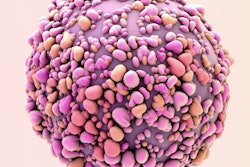Monday, November 28 | 1:30 p.m.-2:30 p.m. | M6-SSBR04-1 | Room E451A
Increasing mammographic breast density decreases the overall performance of breast cancer screening, but supplemental imaging may help, according to this talk.Nicolas Payne, PhD, from the University of Cambridge in the U.K. will discuss his team's findings, which explored the impact of breast density on breast cancer detection in a cohort of 35,729 digital mammograms.
The group found that screening sensitivity decreased as breast density increased, using BI-RADS categories A (least dense) through D (most dense). Screening sensitivity for women in category A was 78.4%, 72.2% for category B, 59.2% for category C, and 50% for category D. The researchers also noted similar trends in specificity, though not as pronounced. This includes a specificity of 97.6% for category A and 95.4% for category D.
Additionally, the number of interval cancers per 1,000 increased with density, from 1.8 for category A to 8.3 for category D. Also, the majority of women (46.2%) fit into category B. Women in category D make up 10.1% of the cohort.
Payne and colleagues wrote that the drop in sensitivity with increasing density challenges screening programs and highlights the need for breast density to be reported. They advocated for targeted budgeting of supplemental imaging resources using mammographic density.
To find out more about the results and potential strategies, please attend the RSNA presentation.




















